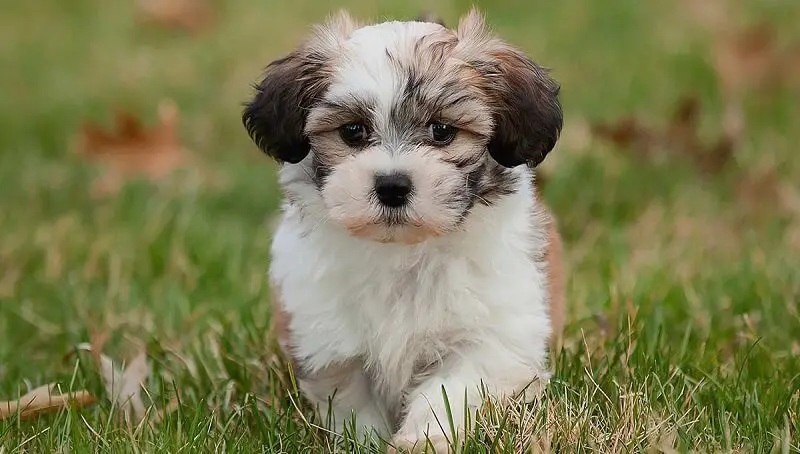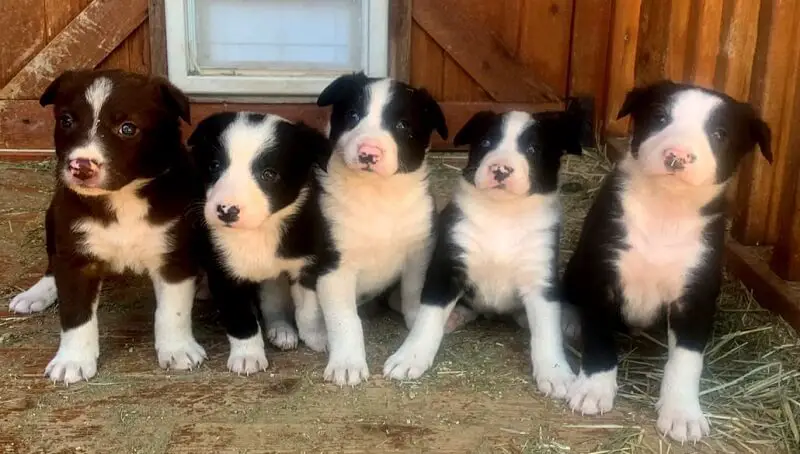
Facts About the Miniature Pug
June 8, 2022
Facts About the Bichon Shih Tzu
June 9, 2022
The McNab is considered a very well-mannered and gentle dog. It is a herding dog breed that needs a lot of exercise and activity. Read this article to find some important information and interesting facts about the McNab, a very unusual and less known breed.
Interesting fact
Herding breeds are considered some of the most active and smartest dogs in the world. There are even instances where people would get into the farm life and start raising sheep only because they love training herding breeds of dogs.
The McNab breed has a lot of other names as well, like the McNab Border Collie, the McNab sheepdog, the McNab shepherd, etc. McNab dogs are appreciated for their herding abilities and look pretty much like a short-haired version of Border Collies. They aren’t a breed that was kept for its beauty, but more for their brains. McNabs are pretty well-tempered herding dogs, not easily excitable, unlike most sheepdogs who get over-excited very easily and will settle down pretty hard after that. They will find their happiness in leading the livestock. They are valuable companions for any farmer due to their work ethic, high energy levels, and sharp intelligence.
You might also like my articles on other breeds like the Hmong dog, the miniature Pug, or the Boxer Pitbull mix.
These dogs will have no problem getting along with other pets and people, including children, being very tolerant and friendly. Although they will easily accept any stranger and consider them part of the family, they would first inspect them very cautiously. These dogs can control the movement of livestock and other big animals by circling around them, barking at them, or nipping at them. They have a natural ability and great skills in herding. The McNab dog is slowly becoming popular around the world, although it is not yet recognized by known kennel clubs.
McNab Dog Breed Information
- Origin – Mendocino County, California, U.S.
- Weight – 40 – 70 lb (16 – 34 kg).
- Height – 15 – 25 in (38 – 64 cm) at the withers.
- Life Expectancy – Around 16 years.
- Coat Type and Color – It is usually red with white markings or black with white markings, although there have been tri-colored specimens.
- Tail – It is either long or naturally bobbed.
- Ears – Its ears will either have corners that flop over or will be pricked. They are triangular.
- Eyes – Copper, hazel, or brown eyes with an almond shape. Border Collies on the other hand are known to have blue eyes.
- Distinguishing Characteristics – Their feet are cat-like, which gives them a lot of agility.
Grooming This Dog
This dog might have short or medium fur, but never long. Occasional bathing coupled with regular brushing should be enough to keep the coat healthy and great-looking. It usually manages to clean itself pretty nicely and grooms itself properly without your help. A McNab will hardly ever get dirty. You can use brushing as a way to bond with your pet. It will also give you the possibility to check the dog’s skin for a flea infestation, sore areas, or injuries.
General Looks
Although small to medium-sized, the Mcnab dog is considerably strong. It will usually feature a black, smooth, and short coat with clear white markings on its tail tip, feet, chest, and muzzle. These markings won’t look the same on all dogs. YOu will never notice mottled patches of color over the coat of a McNab.
Its History
This breed is believed to have been developed by the Scottish rancher Alexander McNab while moving to California in 1866. He created this dog by mixing various shepherd dogs with his Scottish Border Collie. Right from the start, McNab dogs were considered great animals for herding cattle. Ranchers and farmers from California still use this dog even in our times. Even with all their popularity, these dogs still aren’t a part of the National Kennel Association.
Temperament and Personality Traits
McNabs are mostly used to herd cattle but they can also herd other animals. They can also be used for llama, sheep, or horse herding, for example. They will love to display their herding skills and will like to boss other animals around. Some people also use them for boar or deer hunting. When they don’t get things their way, they are known to bark and tug, but overall they are considered friendly and sociable with any domestic animals regardless of their size. They get along perfectly with chickens, ducks, and even cats. They are also used on airports and golf courses to control wild geese’ movement. They will also be protective, obedient, very dependable, and hardworking.
They will also need a big space to move around and daily activities to stay healthy, happy, and in shape. Keep in mind that if you don’t give them enough activities to fill their day, they will find stuff to do on their own, like chewing on shoes and furniture or digging in your yard. The McNab will have to get not only physical exercises but mental ones as well, to develop a positive personality. They will always want and like to learn new tricks and activities. They are also curious enough to always want to explore their surroundings. YOu can stimulate their brain by designing activities according to their likes. This is a breed that likes outdoor life and won’t do well in an apartment. YOu can expect a McNab to be very helpful, good-natured, affectionate, and kind.
Although this breed will have a hard time adapting to a passive life in an apartment, they will surely love to be part of a family.
Exercise and Training
 The best home for this breed would be a protected field with either a river or a lake, where the dog can run around. If you keep this dog in a limited space, you have to take it on long walks daily, to ensure the necessary levels of exercise. You will also have to offer it a lot of mental stimulation and exercise. This dog isn’t hard to train.
The best home for this breed would be a protected field with either a river or a lake, where the dog can run around. If you keep this dog in a limited space, you have to take it on long walks daily, to ensure the necessary levels of exercise. You will also have to offer it a lot of mental stimulation and exercise. This dog isn’t hard to train.
You should train and socialize the puppy from a very young age. When not properly trained, a puppy will want to herd anything that moves, which means it can become really stressful for children. This dog will also nip at the heels of family members and play-chase them. Teach the dog to stop when you shout ‘no bite’ and tell your child to stop running whenever the dog follows them. This is something that will be learned pretty easily by the puppy. They will love to play with and around children. They can easily be taught to bring toys back and once they do, they can do this for hours.
Its very agile and active nature makes the McNab a great ‘Frisbee’ competitor. The McNab can be taken out for jogs because it will be a faithful and lively companion on runs. If you’re the type of person to spend most of your time outdoors or live in the country, then this dog might be perfect for you. You can use this dog’s herding skills in different dog sports or for various tasks around the house. Among the favorite sports for these dogs are herding trials, agility tests, obedience classes, and anything involving tracking. Despite their agitated nature, McNabs are still among the best therapy dog breeds. They will be perfect for policemen and disabled people as well.
Common Health Problems
This breed will usually have very few genetic issues. Among the most common health problems for a McNab will be epilepsy, hip dysplasia, ‘canine nictitans gland prolapse or Cherry eye, von Willebrand’s disease, which is a congenital blood clotting disorder, sagging or droopy eyes due to ectropion, primary lens luxation, or lids curled inwards. You should also vaccinate the dog and take it to regular vet visits to get his teeth and ears checked regularly.
